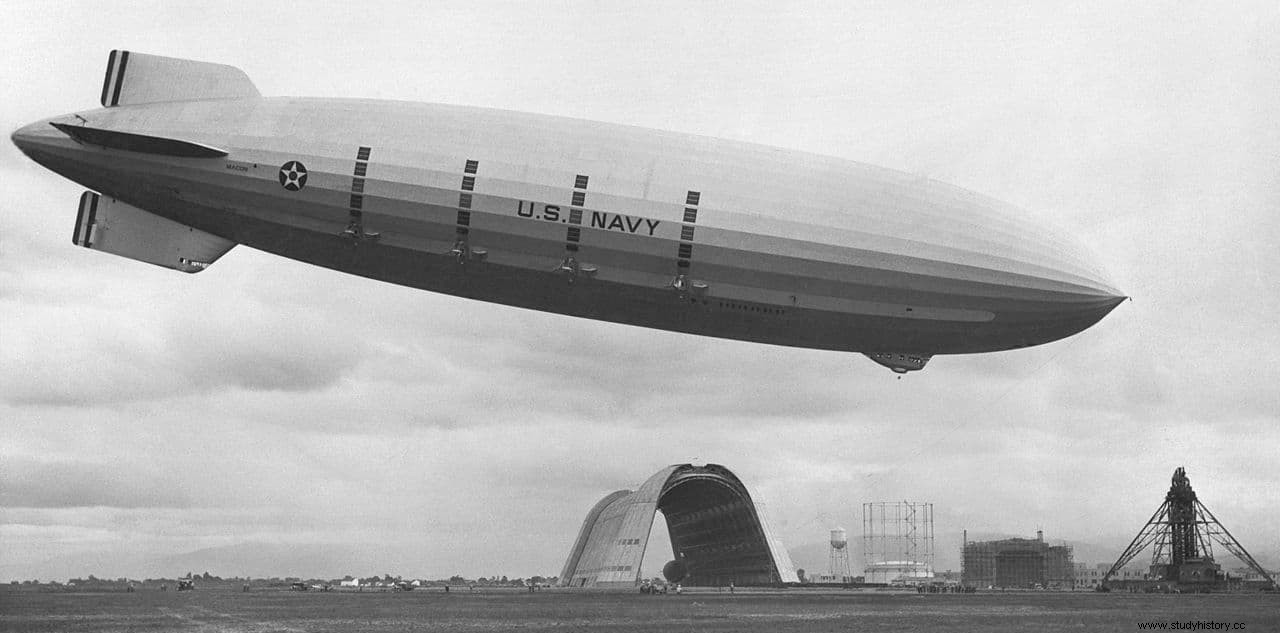During World War I the Germans used airships for military purposes. The famous Zeppelins were used mainly for exploration and naval attack missions, and the British and Americans would also use them extensively throughout the conflict.
In the following years it continued its development, dedicated mainly to passenger transport, until the succession of several accidents, the last of which was the fire of the Hindenburg on May 6, 1937, caused its popularity to decline, and little by little they were discontinued. However, by December 7, 1941, the date of the Japanese attack on Pearl Harbor, the United States still had 10 active units, 6 of which were combat.
One of the most curious artifacts to emerge from German ingenuity in the years of the First World War was the exploration gondola , also called spy basket (in German Spähkorb or Spähgondel ), with which some airships that did reconnaissance work were equipped.

Its origin is found in the Peilgondel , a kind of heavy plumb line that was used to immobilize the radio antenna of airships in order to improve communications, developed by Paul Jaray.
The evolution of this artifact became a basket made of willow rods and whose shape imitated that of a projectile, with tail and side rudders (which in the end did not perform any essential function) and inside which an observer was housed. Its total weight was about 1.5 tons. It was created by Captain Ernst A. Lehmann and Baron Max von Gemmingen (who was Count Zeppelin's nephew), with design by Max Oertz.

The basket was lowered by cables from the deck of the airship to several hundred meters in order to observe the terrain more closely and even to help in the navigation of the ship, while it remained hidden in the clouds or at a height where it could not be seen. could be hit by anti-aircraft fire.
In fact, to test his invention, Captain Lehmann blindfolded the helmsman of the airship, while he lowered himself into the prototype using a winch some 150 meters below the aircraft. He carried a compass and a telephone connected by cable, with which he was telling the helmsman the course he should take.

But the first to use the invention in a bombing mission was Baron Gemmingen. In March 1916 the airship Z XII (model LZ26) of the baron was returning from a failed raid on London and headed for his secondary target, Calais on the French coast. There were many clouds and the airship did not have good visibility.
So the baron dropped into the Spähkorb fastened with a 1 kilometer long strap specially made of steel with a rubber insulated brass core (which at the same time served as a telephone cable), and equipped with a wicker chair, a table, an electric lamp, a compass, a telephone and a lightning rod.

Gemmingen was transmitting navigational orders and indicating what kind of bombs to drop and when to do it, while the defenders of Calais could not see the hidden aircraft in the clouds with their searchlights, much less hit it with artillery fire. The gondola was so small that it went unnoticed. The airship circled over Calais for 45 minutes and made 5 bombing runs.
On September 4, 1916, a German LZ60 zeppelin bombed London. In his flight, and with the aim of gaining higher altitude, he got rid of his observation gondola, managing to reach 5,900 meters. The gondola fell near the town of Colchester, and today can be seen in the Imperial War Museum in London.

There is no record of its successful use during the First World War, only two or three documented occasions on the German side. And it is that the climatic conditions that allowed the use of the basket were not very common. But after the war the Americans copied the idea, using scout gondolas on the airship USS Akron (1931-1933) and her successor the USS Macon (1933-1935). Photographs exist that show a gondola hanging from the USS Macon in September 1934.
Apparently, despite the danger and loneliness that came with being assigned to the gondola, the crew often volunteered to do so, since it was the only place on the aircraft where you could smoke.

As for the inventors, Captain Ernst A. Lehmann came to be considered the best airship pilot in the world, although his maneuvers were sometimes dangerous. He was one of those killed in the Hindenburg fire, where he was traveling as an observer and not as an officer. Count Max von Gemmingen ended his military career as a colonel and succeeded his uncle as head of the Zeppelin Foundation, which he directed until his death in 1924.
